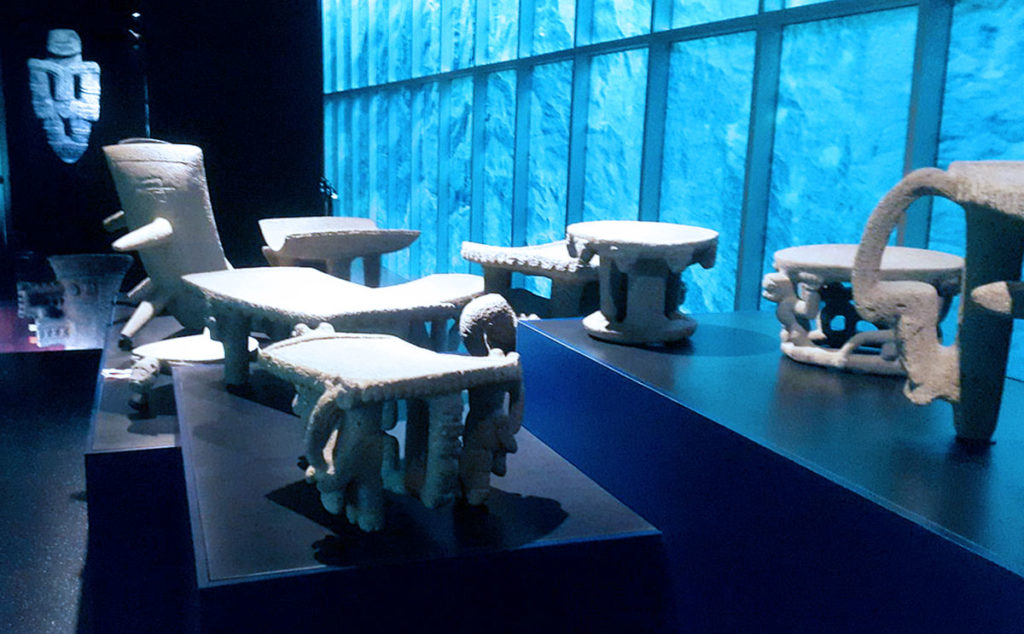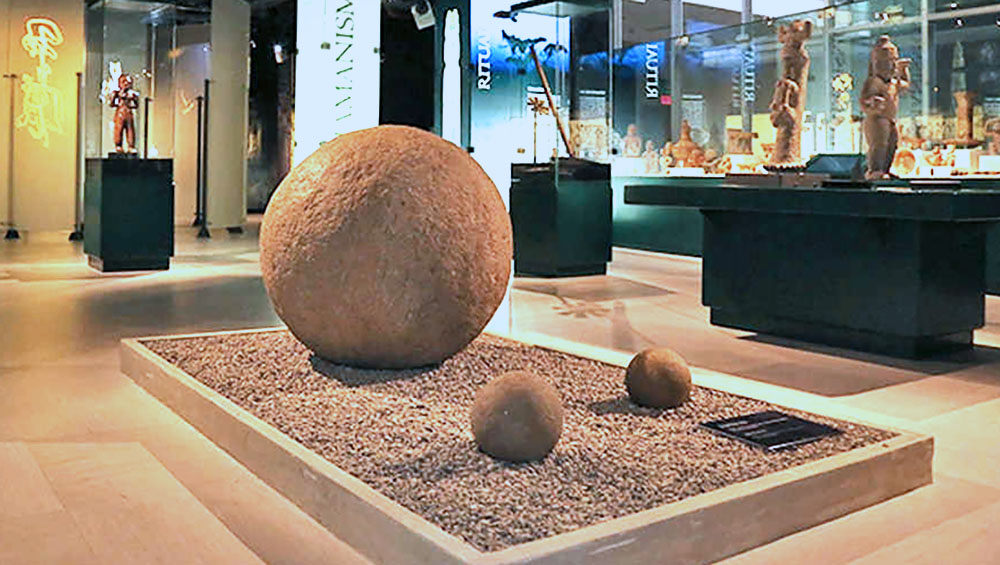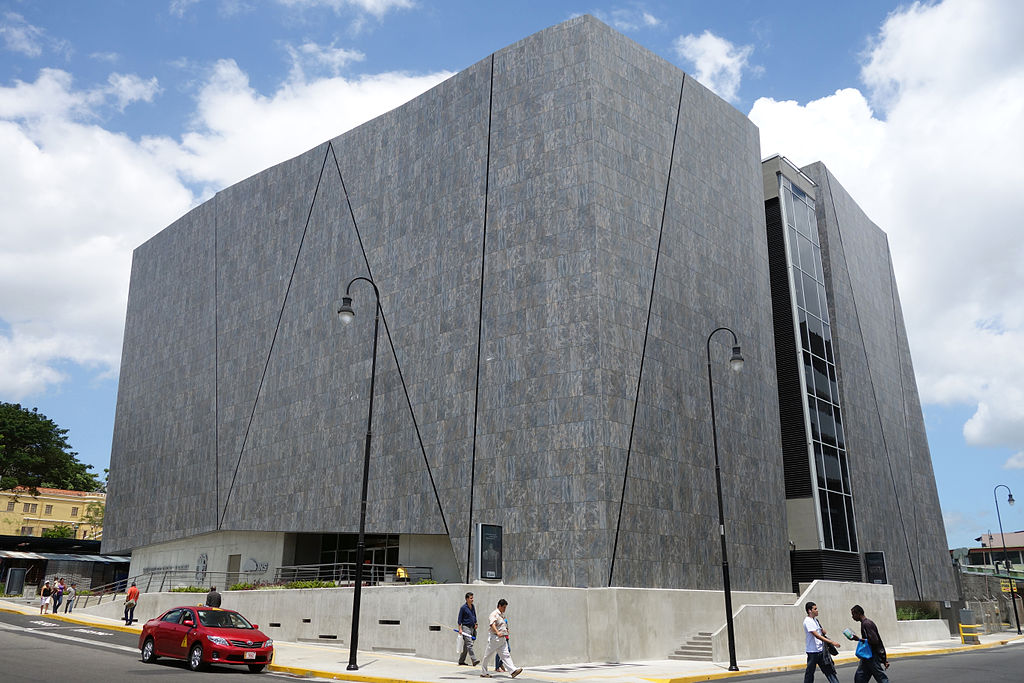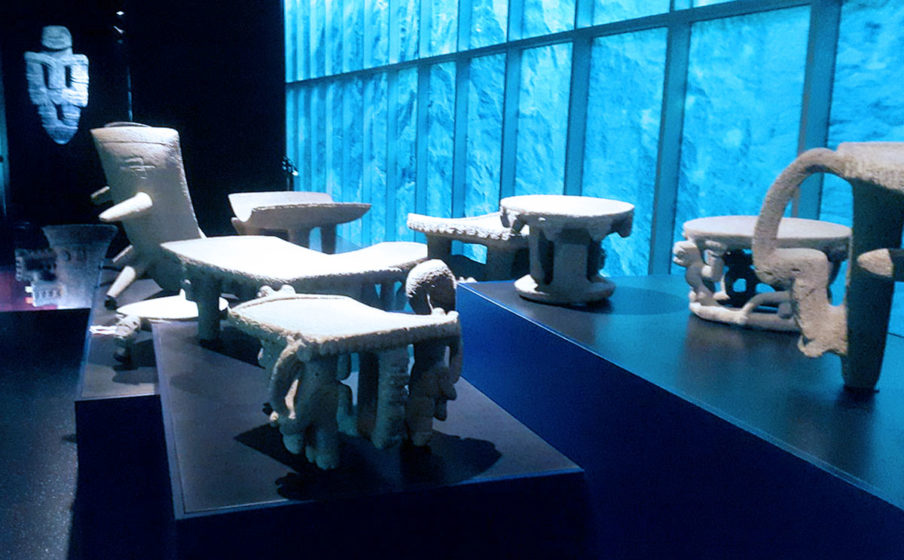
The Costa Rica Jade Museum located in the capital San Jose, houses the most pre Columbian Jade in the world. It also holds a large collection of archeology, art, ethnography and numismatics treasures. The museum is in a distinct building of post modern design and was founded in 1977.
The building itself was originally built by the government as a way to stave off the loss of national treasures through tomb raiding. During the 1970’s, there was a mad rush by people all over the world to add rare artifacts into their private collections, and this included Costa Rica’s many Pre-Columbian artifacts.
This was such a huge problem that the government of Costa Rica was forced to pass a law prohibiting the purchase of these artifacts within the country.
In an effort to protect and house any artifacts seized from these illegal purchases or found on archaeological sites, they were given to the Instituto Nacional de Seguros for safe-keeping.
Eventually, the INS amassed such a huge collection that they needed a safe place to store and later display these artifacts. Hence, construction began on the Colección Arqueológica del Instituto Nacional de Seguros, or the Archaeological Collection of the National Insurance Institute, in 1974.
The building was renamed the “Jade Museum” when it opened to the public 3 years later.
What is on Display at the Jade Museum?

The Jade Museum, originally designed to resemble a block of uncut raw jade, has a large collection of Pre-Columbian artifacts, dating anywhere between 500 B.C. and 300 B.C., when the Mesoamerican jade trade was at its peak. Jade was a prized commodity among the Olmecs and the Mayans at the time.
Both civilizations used it to create artwork, jewelry, and of course, religious items. The museum itself has more than 7,000 items on display, all of which are divided into 7 distinct exhibits, spread out into five floors. Each of these exhibits has its own distinct theme and collection of items.
Despite its name, the Jade Museum also has exhibits on non-jade items, including ancient works made of gold, stone, obsidian and ceramic. There are also exhibits on the indigenous peoples of Costa Rica.
The jade artifacts themselves are the centerpiece of the entire museum, with many of them being displayed on the lower floors. Most of the non-jade artifacts can be viewed on the upper floors of the museum.
All of the displays are attached with graphics, maps and other visual aids that help educate the museum’s visitors. Of course, the information on these educational materials are usually in Spanish, so you’ll need to understand the language, or are with someone who does, in order to appreciate what’s written.
Aside from the exhibits themselves, there is also a museum café and a restaurant that serves sandwiches, salads, and other items if you want to take a break from walking.
There is also a gift shop where you can buy souvenirs to take home. For children, there are interactive exhibits for them to play around with and be educated at the same time, including giant puzzles and excavation play areas.
Visiting the Jade Museum

If you’re interested in taking a visit, the Jade Museum is open year-round, including weekends from 10 am to 5 pm. It is located on Central Avenue, within Plaza de la Cultura, west of the Plaza de la Democracia in central San Jose.
The museum might be closed during national holidays, however, so it’s best to double check if you’re in San Jose during a major holiday. The Jade Museum is a popular place to visit, so the lines can be a bit long.
If you’d rather not wait in line, it’s best to book your tickets ahead of time, or you can explore the museum as part of a tour.
Tours don’t spend much time in the museum, however, so if you want to explore it more thoroughly, it’s best to just book tickets in advance and dedicate an entire day to it. Expect to spend at least 2 hours in the museum in order to appreciate it.
Admission fees are around $15 each, with children 12 years and under receiving a significantly reduced rate of $2. Children 5 years and under get free admission.
Final Thoughts
When it comes to educating a community of their history and heritage, museums certainly do the job better than most. Not only does it teach us of our collective story as a people, it also engages us far differently than reading a history book ever will.
You are pretty much sharing the same space as an item that was used and created by people centuries into the past.
This ability to bridge the past and present is also embodied by the Museo del Jade of Costa Rica.
Whether you are a history buff, a cultural explorer, or simply curious about the ancient civilizations of Central America, the Costa Rica Jade Museum is a must-see attraction.

